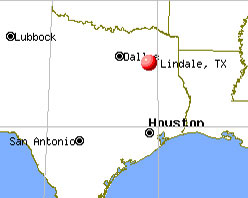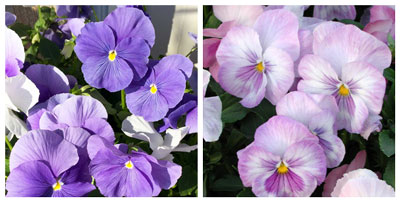Plant of the Week: Pansies
At the risk of sounding like an old guy, when I was a kid in College Station I had a nursery and did landscape contracting out of our backyard east of the campus.

Map of Lindale, Texas, from the city’s website. Lindale is in the sandy hills of East Texas just north of Tyler.
This time of year I bought pansies dug from the hillsides of Lindale, packed in wet newspaper and shipped by bus to the Greyhound station about six blocks from my house. I’d ride my bike down to the station, strap on the box and start my deliveries from College Hills clear into the south end of Bryan. Within hours the pansies would all be planted, and weeks later I’d be seeing my plants bloom all across town.
I guess it’s the memories of those plants that still make me love pansies more than any other flowers I grow. But times for them have brought dramatic changes in these fragrant flowers. Breeders have worked to bring us unbelievable colors and huge improvements in production of blooms. Today’s hybrid pansies are stunning, and growers are turning them out by the millions, mostly in 4-inch pots in full bud and bloom.

Nurseries seem to offer broader arrays of beautiful pansies each year.
Suggestions for success…
• Start with healthy, vigorous transplants.
• Set them into raised beds that will always drain perfectly and quickly during periods of wet weather.
• Incorporate 5 or 6 inches of organic matter (a blend of equal parts of well-rotted compost, pine bark, sphagnum peat moss, rotted manure) and 1 inch of expanded shale.
• Rototill to blend it all to a depth of 12 inches, and rake to a rounded crown.
• Space the plants on 10-inch centers, and water them immediately after planting.
• Apply a high-nitrogen, water-soluble plant food each time that you water them the rest of the season.
• If you’re in a part of Texas where temperatures drop below the mid-20s, have floating row cover on hand to protect your plants and their blooms in event of extreme cold. They would survive without it, but it will keep them looking their best.
Pansies work well, also, in large patio pots. Use a top-quality potting soil and fertilize them each time that you water them. Make provision to protect them in North Texas if temperatures drop below the mid-20s. You do lose some winter hardiness when plants’ roots are exposed to the cold.

Solid-color types make the best show from a distance, but selections with “faces” display whimsical personalities.
Note: For the best overall show from a distance, concentrate your pansy plantings on small to mid-sized types. They produce far more flowers than the giant-flowering selections. Types with blotches on their petals (“faces”) have more personality, but those blotches also take away from the visual impact the plants make from a distance.
